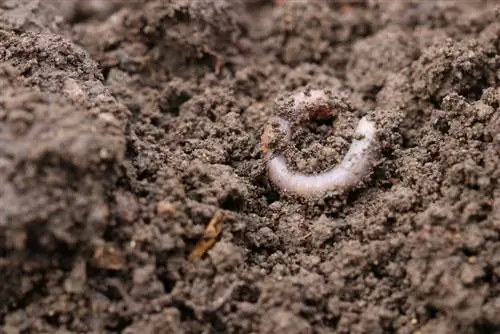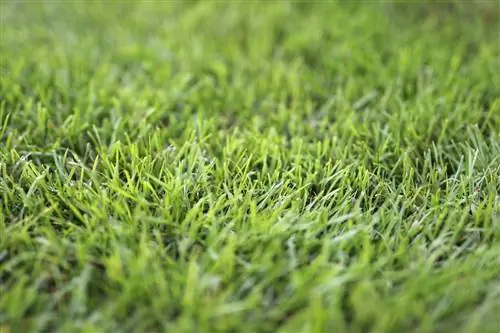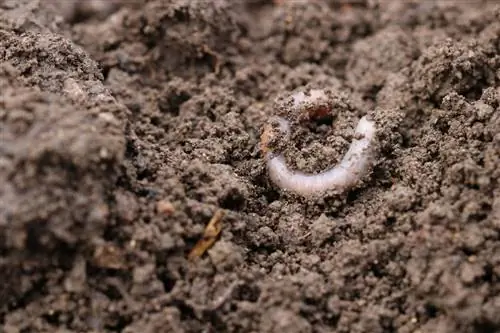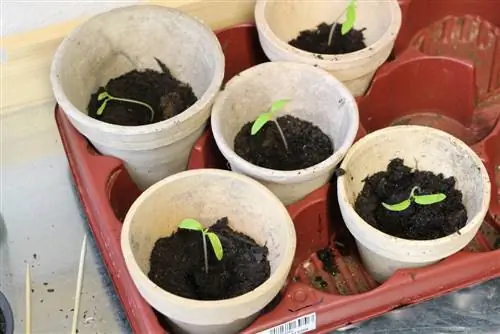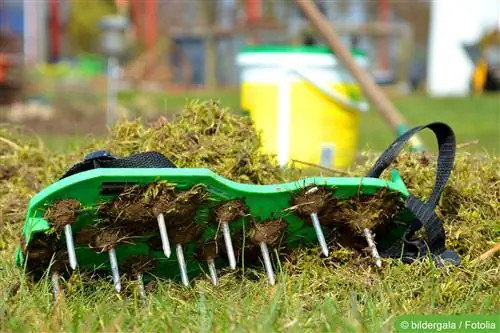- Author admin [email protected].
- Public 2023-12-17 03:39.
- Last modified 2025-01-24 12:45.
Regular loosening of the soil is just as necessary in the home garden as in agriculture. Many hobby gardeners prefer manual tools for loosening the soil, while others find it quicker and easier with machines. But what kind of devices and machines are suitable for loosening soil can be found below.
Reasons for soil loosening
Moisture
Over time, all soil becomes compacted. Soil compaction causes the earth to become less permeable to water, making it harder for water to penetrate and drain away. The result is a lack of moisture or the formation of waterlogging. In both cases, plants and seeds are damaged and can die.
Air
The roots of all plants need air in order to establish themselves ideally or to penetrate into the soil. If this is too tight/tight, this is impossible. Plants cannot find support and root growth is disrupted because there is no space for them to spread. This leads to general growth disorders and possibly the death of affected plants.
Nutrients
In solid soil, the nutrients are encapsulated in it so that they cannot be absorbed by the roots. Deficiency symptoms follow due to a lack of nutrients and if the soil is not loosened, the plants will die. When it is loosened, the soil consistency decomposes and nutrients are freely accessible to the plant roots again.
Soil preparation
In many cases, before sowing or planting, soil preparation in the form of loosening the soil is necessary to create ideal conditions for “starting”, for reasons already described. But additional treatment, such as leveling, may also require prior loosening of the soil in order to create an ideal soil condition overall. Without prior soil loosening, leveling, for example, would entail too high a risk of compaction.
Weeds
Weeds are generally an unwelcome guest, especially in vegetable beds. By loosening the soil, most weeds lose ideal conditions and die or do not settle at all. The firmer and denser a soil is, the more and faster weeds grow.
Manual soil loosening devices
In principle, for every device that can be used manually, there is also a machine answer for a wide variety of soil cultivation methods. While hand-held devices often require strength and stamina and also take up a lot of time, the same gardening work is easier and much quicker with electric machines. However, with manual devices you can react better to irregularities and, if necessary, work more precisely than with mechanical devices. In addition, manual devices are usually significantly cheaper to purchase than garden machines. However, these are worthwhile at the latest when it comes to larger areas that need to be loosened up.
Digging fork/fork
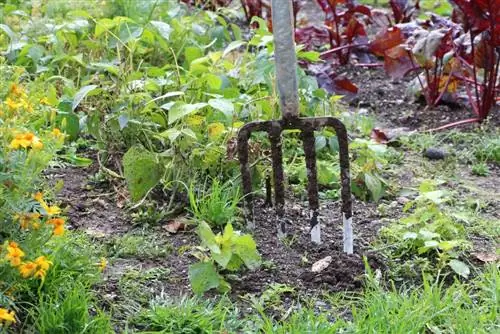
The digging fork is constructed similarly to a classic pitchfork. It is an ideal alternative to the spade when the ground is extremely hard and it is difficult or impossible to get into it with the spade. A digging fork is particularly suitable for clay and stony surfaces. The fork-like arrangement of the tines makes it easy to guide past stones and the like, while the pointed tines are easier to pierce into heavily compacted soil. Digging forks with flat and wide sides are suitable. Wide specimens speed up the work. In addition to loosening the soil, the digging fork is also beneficial for other gardening work:
- Digging
- Implementation of compost
- Floor ventilation
NOTE:
The digging fork or digging fork is often also referred to as a spading fork, garden fork or broad rake and is offered in stores with these names.
Rake
The most classic of all garden tools is the simple rake. It is available in different versions. But they all have one thing in common: tines that are set like a comb and are generally only used for loosening the surface of the soil.
Hand rake
A hand rake does not have a long handle, so it sits directly in the hand. It has a maximum of five tines, which means it has a small width and is therefore less suitable for larger areas. Small beds and especially narrow areas of soil can be ideally loosened up. With pressure, the tines can also reach deeper into the earth and loosen the soil accordingly.
Handle rake
With a handle rake, a rake attachment and a handle are usually sold separately. The rake attachment is attached to it so that you can loosen the earth while standing thanks to a handle length of up to 1.60 meters. Here, too, the loosening of the soil is mainly done superficially and in order to dig deeper into the soil, considerable pressure must be applied with the manual handle rake. The rake width can be selected between 30 and 40 centimeters. This means that larger areas of earth can be worked on.
Spade
The spade consists of a relatively flat metal plate that has a sharp outer edge. The spade is used to dig into the soil and can loosen the soil by digging. The depth reaches around 30 centimeters. Too much digging should not be done in one area, as this can have a negative impact on the microorganisms and consequently also negatively affect nutrient enrichment.
Other areas of application are:
- Root divisions
- Cutting off lawn and bed edges
- Digging up roots
- Digging planting holes
Sauzahn
A sow tooth is a typical device for loosening soil. It consists of a handle with a sickle-like metal blade attached to the end. The sow tooth acts as a plow and works through dense soil without turning it over. This has a positive effect on the microorganisms that remain in the soil. The operation requires a certain physical effort, because in order to reach the ground ideally, the device has to be moved vigorously. The advantage is that no bending is required and you can work without straining your back.
Tip:
Copper alloy blades are said to promote the fertility of soils and keep them he althier.
Grubber
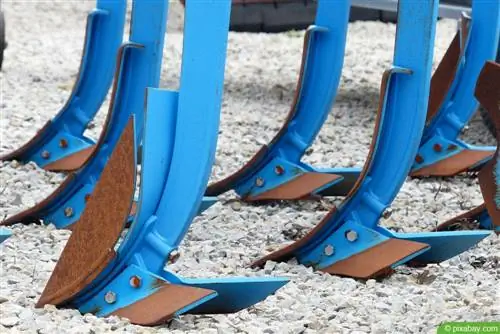
A cultivator is a garden tool that loosens and crumbles the soil without turning the earth, as is the case with a spade. A cultivator usually comes with knife-like wheels with pointed tines. The manual version is pushed by hand. There are also versions with a handle and three prongs. The cultivator is often used to scarify lawns. It ensures better ventilation and water permeability on the earth's surface. It is also used to prepare soil for fertilization.
Electric soil loosening
In addition to individual machines that serve one purpose, multi-purpose machines can also be purchased. Mobile single-axle machines, known as lawn mowers, are also available for use in loosening soil. What matters here is what work needs to be done. The range offers a large selection of device accessories for a wide range of uses, such as
- Verticutting
- Root milling machines
- Raken
- Plowing
- Leaf sucking
- Shoveling
- Eggs
- Lawn cutting
If you only need a specific device, a simple device is cheaper financially, but at the same time you forego flexibility for gardening. Basically, the following electric machines or electrical devices are used to loosen the soil:
Electric hoe
Electric hoes have only been available in stores for some time now. They have the same properties as a conventional rake and can also loosen the surface of the soil. However, they can be purchased in larger widths of up to 55 centimeters, so that larger areas of earth can be worked on even more quickly. The electric hoe is pushed in front of you like a lawnmower. It stalls more often on very uneven surfaces, which is due to the usually limited performance. It is offered with a power cable connection and battery operation. The former has the disadvantage that a socket has to be nearby and the cable can get in the way when working on the ground. Depending on the battery power, cordless tillers can seriously disrupt working hours if the battery is empty but the work has not yet been completed.
Motor plow
Motor plows are usually equipped with so-called hoeing stars, which rotate roughly and significantly deeper into the ground than electric hoes. They stir up the earth and create “air channels”. Motor hoes are often offered whose attachments can be changed and can be equipped with other useful garden attachments. In this way, one device can easily be turned into an all-round machine for private use, which can also be used to push snow or scarify the lawn.
Electric tiller
An electric tiller, which is also sold under the name “garden tiller”, is ideal for large areas of land. It gets quite deep into the ground and digs up the layers of earth. A tiller is particularly suitable for areas with heavy weed growth because it loosens even the deepest weed roots. It is available with an electric motor and power cable connection as well as with a petrol engine for more freedom of movement and flexibility in terms of application.

